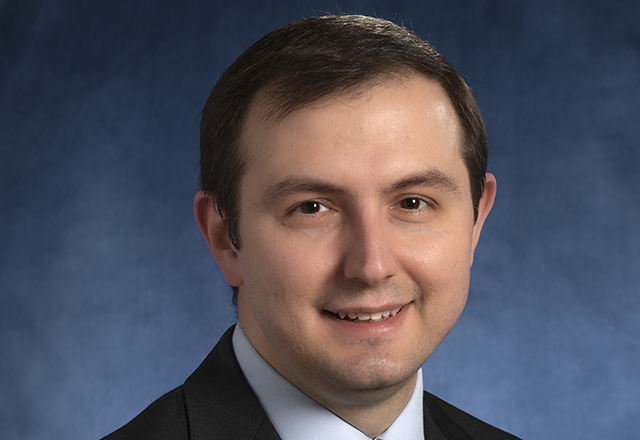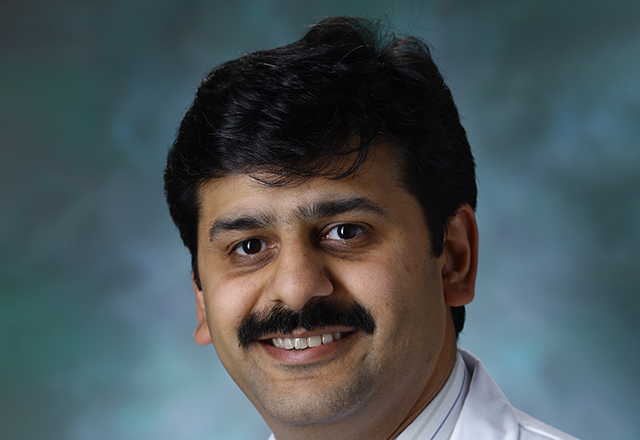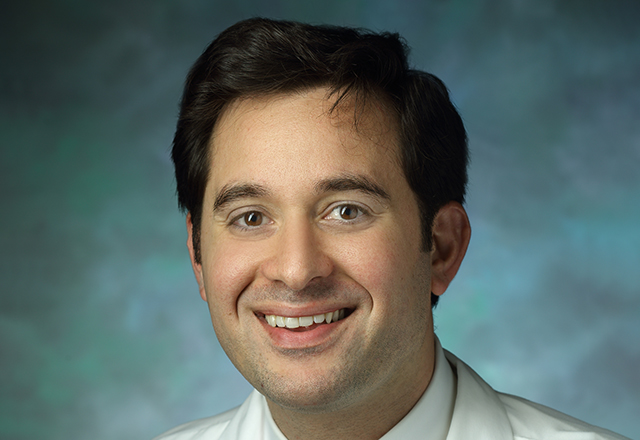New Faculty Leadership
As part of our commitment to growth in the Russell H. Morgan Department of Radiology and Radiological Science, we welcome these new faculty leaders who have consistently demonstrated commitment to excellence in patient care, resident and fellow education, and pushing groundbreaking research.
Emily Ambinder, M.D., M.S.
Division Chief of Breast Imaging

Ambinder has been serving as the assistant chief of breast imaging since 2020, in addition to her activities with the residency and fellowship programs and multidisciplinary research teams. An excellent breast radiologist across modalities, she has spearheaded divisionwide initiatives to improve patient care as well as data tracking to facilitate research.
Consistently ranked as a top faculty educator by residents, Ambinder’s mentorship extends beyond the residency and fellowship programs as she also provides lectures on the radiology elective to medical students and acts as the clinical mentor for a team at the Johns Hopkins Center for Bioengineering Innovation and Design. Since 2023, Ambinder has taught radiology residents in Guyana through RAD-AID International every month. She serves on the American Board of Radiology Qualifying Exam Breast Committee to develop the core exam for breast imaging taken by all radiology residents in the United States.
A prolific researcher with over 50 original peer-reviewed manuscripts, she focuses on improving access to breast imaging, digital breast tomosynthesis and tomosynthesis-guided biopsy, and translational research in liquid biopsy and coherence-beamforming imaging. She is part of multidisciplinary teams involving the Sidney Kimmel Cancer Center and the Johns Hopkins University Whiting School of Engineering, which have received funding from multiple sources including an NIH R01 grant and a Research Scholar Grant from the Radiological Society of North America.
Javad Azadi, M.D.
Director of Quality and Safety

As the ultrasound section chief from 2020–24, Azadi’s clinical expertise includes ultrasound, ultrasound-guided biopsy, body MRI, body CT and adult fluoroscopy, as well as cardiac CTA and MRI. His academic interests encompass the development of novel imaging techniques, improving high-value care in medicine, and medical education. As the director of quality and safety, his priorities include elevating patient experiences through innovative solutions and streamlining processes to improve radiology quality and safety at all levels of care.
Azadi’s work extends beyond Johns Hopkins to an international level, including his past work on the Radiological Society of North America (RSNA) COVID-19 Task Force to author and share educational and paper policies with other radiologists worldwide. He has received grant support as a co-investigator from the NIH, DARPA and AHRQ, and is an organizer of the High Value Practice Academic Alliance’s annual Architecture of High-Value Health Care Conference. He is a nationally recognized speaker and has given talks on providing high-value radiology care to physician audiences across the United States. He is an active member of the Society of Radiologists in Ultrasound, RSNA and the American College of Radiology.
Sachin Gujar, M.B.B.S.
Interim Chief of Magnetic Resonance

Gujar has represented the neuroradiology division for departmental implementation of Johns Hopkins’ enterprisewide software developments. He is an active presence in the Radiology Quality and Safety Committee and the MR Protocols Committee. He is widely acknowledged for his work as an educator, receiving the Top 10 Educator in Radiology Award from residents and serving as the Neuroradiology Fellowship Program director. As the assistant director of the neuroradiology division, he focused on coordination across the Baltimore and National Capital Region neuroradiologists.
His clinical and research interests include all aspects of adult and pediatric neuroradiology, including head and neck radiology, spine and spinal cord disorders, and cerebrovascular diseases with a particular interest in brain tumor imaging, physiologic imaging and functional MRI. As a researcher, he has published numerous articles on a range of topics within neuroradiology and has lectured within and outside of Johns Hopkins on MR imaging.
Farzad Sedaghat, M.D.
Section Chief of Ultrasound

Sedaghat’s clinical specialty encompasses abdominal imaging and intervention, with a particular focus in genitourinary disease. His research interests include translational research and developing and using novel imaging techniques to address areas of pressing clinical need. He has authored several papers on emerging MRI techniques for diagnostics and intervention, as well as addressing patient safety concerns related to contrast-induced nephropathy. During his time as assistant professor, Sedaghat developed and implemented the Johns Hopkins bladder MRI protocol, improving imaging quality and diagnostic accuracy in the staging of bladder cancer. Sedaghat is an alumnus of the AUR Radiology Resident Academic Leadership Development Program, a BriteStar grant recipient, and serves in the Johns Hopkins radiology department’s Residency Research Lead Program to assist and facilitate residents’ goals and experience in clinical research.
As the section chief of ultrasound, he will focus on furthering the section’s role in the department’s tripartite mission of patient care, education and research. Specific ongoing efforts include an expansion of the contrast-enhanced ultrasound service, streamlining tissue sampling for patients with newly diagnosed cancer, expanding the availability of interventive services at Johns Hopkins Medical Imaging sites, increasing educational opportunities for trainees interested in image-guided intervention, and further collaboration with colleagues in radiology research, pathology and biomedical engineering on emerging ultrasound techniques and applications.
